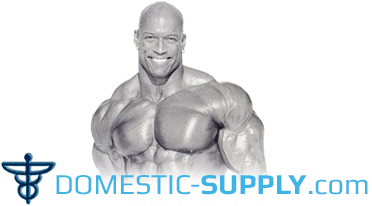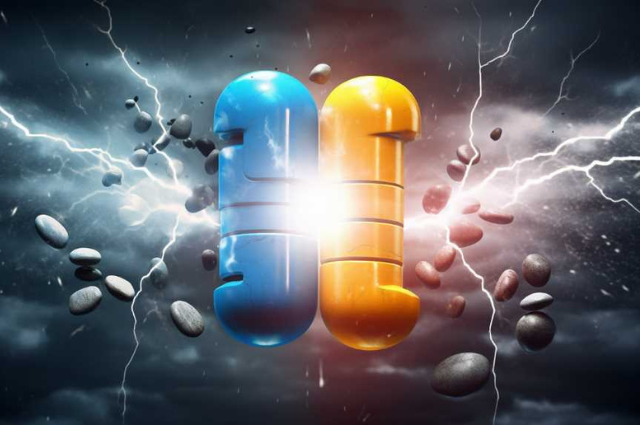Anabolic Vs Corticosteroids: 4 Key Differences Explained
In the realm of pharmacology, steroids are often categorized into two distinct types: anabolic and corticosteroids. Despite sharing the 'steroid' label, these substances exhibit significant differences in their purpose, side effects, legal status, and long-term impact on the human body.
This article elucidates the key distinctions between anabolic steroids, typically linked to muscle growth and athletic performance, and corticosteroids, commonly used in treating inflammation and autoimmune disorders.
By offering a comprehensive comparison, our goal is to empower readers with the knowledge to make informed decisions regarding steroid use.
Key Takeaways
- Anabolic steroids are synthetic derivatives of testosterone designed to promote muscle growth and enhance athletic performance, while corticosteroids have potent anti-inflammatory and immunosuppressive properties.
- Anabolic steroids are used for muscle-building and performance-enhancing purposes, while corticosteroids are primarily used in medicine to treat conditions associated with inflammation and immune responses.
- Prolonged misuse of anabolic steroids can lead to serious health issues such as liver damage, cardiovascular diseases, and psychological disturbances, while long-term use of corticosteroids can cause side effects such as osteoporosis, hypertension, and impaired wound healing.
- Anabolic steroids have a significant impact on physical appearance and athletic abilities, while corticosteroids do not.
Understanding Steroids: The Basics
To comprehend the differences between anabolic and corticosteroids, it is crucial to first grasp the basic principles of steroids. Steroids are a class of organic compounds characterized by a core structure of seventeen carbon atoms arranged into four rings. They are fundamentally derived from the sterane core structure, but vary in the functional groups attached to this four-ring core and the oxidation state of the rings.
Steroids can be categorized into two broad classes: anabolic steroids and corticosteroids. Both types of steroids have significant biochemical and physiological effects, but their functions and uses are distinctly different. They interact with cellular receptors and exert a profound influence on cellular functioning, metabolic processes, and immune responses.
Anabolic steroids, also known as anabolic-androgenic steroids (AAS), are synthetic derivatives of testosterone. They are designed to mimic the muscle-building effects of this male sex hormone. Anabolic steroids are most commonly associated with muscle growth, enhanced athletic performance, and bodybuilding. They function by stimulating anabolic processes such as protein synthesis and muscle cell growth.
On the other hand, corticosteroids are a class of steroids that include glucocorticoids and mineralocorticoids. These steroids are involved in a wide range of physiological processes, including the regulation of inflammatory responses, immune processes, and metabolic control. Corticosteroids, unlike anabolic steroids, do not promote muscle growth but are primarily used in the treatment of inflammatory diseases, autoimmune disorders, and certain types of cancer.
Understanding the fundamental mechanisms and differences between these two types of steroids is essential for their appropriate and effective use in medical and sporting contexts.
Anabolic Steroids: An Overview
Commonly utilized in the world of athletics and bodybuilding, anabolic steroids are synthetic substances designed to mimic the effects of testosterone, promoting muscle growth and enhancing physical performance. They are a subset of the larger class of steroids, which includes corticosteroids, widely used for medical and therapeutic purposes.
Anabolic steroids have a unique mechanism of action inside the body. They enter muscle cells, binding to androgen receptors. This binding initiates a cascade of biochemical reactions that ultimately lead to the synthesis of new proteins, the building blocks of muscle tissue.
To understand anabolic steroids better, consider these three key points:
- Types: There are numerous types of anabolic steroids, including Dianabol, Anavar, and Deca Durabolin. Each type has its unique properties, side effects, and uses.
- Usage: While anabolic steroids are used in medicine for various purposes like treating delayed puberty and muscle wasting diseases, their use in sports and bodybuilding is often considered unethical and illegal due to the potential for significant health risks and unfair advantage.
- Risks: Prolonged misuse of anabolic steroids can lead to serious health issues such as liver damage, cardiovascular diseases, and psychological disturbances like aggression and mood swings.
Corticosteroids: A Closer Look
Shifting our focus from anabolic steroids, corticosteroids serve a distinctly different role in the medical field, primarily known for their potent anti-inflammatory and immunosuppressive properties. These steroids are synthesized in the adrenal cortex, a small gland located atop the kidneys. They can be further classified into two main types: glucocorticoids and mineralocorticoids, each serving unique physiological functions.
Glucocorticoids, such as cortisol, play an integral role in the body's response to stress through their anti-inflammatory and immunosuppressive actions. They are prescribed to manage conditions characterized by overactive immune responses, including allergies, asthma, autoimmune disorders, and sepsis. They also play a pivotal role in the management of inflammatory conditions like rheumatoid arthritis and inflammatory bowel disease.
Mineralocorticoids, on the other hand, primarily regulate electrolyte and water balance in the body. Aldosterone, the most notable mineralocorticoid, works to increase sodium reabsorption in the kidneys, thereby influencing blood pressure and fluid balance.
Corticosteroids can be administered in various forms, including oral tablets, intravenous injections, inhalers, topical creams, and eye drops. It's worth noting that despite their therapeutic benefits, long-term use of corticosteroids can lead to side effects like osteoporosis, hypertension, and impaired wound healing.
Key Difference One: Purpose and Usage
Drawing on the fundamental distinction between anabolic and corticosteroids, the primary differentiation lies in their respective purposes and usage within medical and athletic contexts.
Anabolic steroids, medically known as anabolic-androgenic steroids (AAS), are typically utilized for their muscle-building and performance-enhancing properties. They are often misused by athletes and bodybuilders to gain a competitive edge.
On the other hand, corticosteroids, a category of steroid hormones, are primarily used in medicine to treat a wide range of conditions due to their powerful anti-inflammatory and immune-suppressing properties.
To further understand these differences, we can examine the following three key aspects:
- Medical Application: Corticosteroids are prescribed to alleviate symptoms associated with conditions such as arthritis, asthma, autoimmune diseases, and skin conditions. They are not used to build muscle mass or enhance athletic performance. Conversely, anabolic steroids, while having legitimate medical uses such as treating delayed puberty and muscle-wasting diseases, are often misused for their muscle-enhancing effects.
- Performance Enhancement: Anabolic steroids are widely known for their ability to stimulate muscle growth and improve athletic performance, which has led to their widespread abuse in sports. Corticosteroids, however, do not enhance athletic abilities and are not used for this purpose.
- Physical Effects: Regular use of anabolic steroids leads to increased muscle mass and strength, but also to harmful side effects like liver damage and cardiovascular issues. Corticosteroids, on the other hand, can cause weight gain, osteoporosis, and mood changes, but they do not increase muscle mass or strength.
Key Difference Two: Side Effects and Risks
The second key difference between anabolic and corticosteroids lies in the variety and severity of their potential side effects and associated health risks. Both classes of drugs have their unique side effect profiles, largely influenced by their mechanism of action, dosage, duration of use, and individual health factors.
Anabolic steroids, primarily used for muscle growth and performance enhancement, can lead to severe health risks when misused. Potential side effects include cardiovascular diseases such as heart attacks and strokes, liver damage, kidney damage, and psychiatric effects such as mood swings, aggression, and depression. Long-term misuse can cause hormonal imbalances, leading to reduced sperm count in men, and menstrual irregularities in women. It's also linked to physical changes like male-pattern baldness and development of breast tissue in men.
Corticosteroids, on the other hand, are used to reduce inflammation and suppress the immune system. They also have a wide range of side effects, which can be divided into short-term and long-term effects. Short-term use of corticosteroids can cause elevated blood pressure, increased blood glucose levels, mood changes, and insomnia. Long-term use, particularly at high doses, can lead to more serious complications such as osteoporosis, cataracts, thinning skin, susceptibility to infections, and suppression of adrenal glands leading to dependency on the drug.
Key Difference Three: Legal and Illegal Status
Understanding the legal and illegal status of anabolic and corticosteroids presents the third key difference between these two classes of drugs. This distinction is crucial as it not only influences the usage of these substances but also impacts their distribution, possession, and penalties associated with their misuse.
- Anabolic Steroids: Anabolic steroids are classified under Schedule III of the Controlled Substances Act in many countries, including the United States. This classification implies that these drugs have a potential for abuse and dependency, and their use is restricted to medical prescriptions. Possession or distribution without a valid prescription is considered illegal and can lead to severe legal consequences, including hefty fines and imprisonment.
- Corticosteroids: Corticosteroids, on the other hand, are not under the Controlled Substances Act. These drugs are legal and readily available with a prescription. They are used widely in the medical field to treat a range of conditions, from autoimmune disorders to allergies and inflammation. Misuse of these drugs, while not illegal, can have serious health repercussions.
- Scope for Misuse: The legal status of these drugs significantly impacts their potential for misuse. The illegal status of anabolic steroids often leads to a black market, where quality and safety cannot be guaranteed. Conversely, the legal status of corticosteroids can lead to over-prescription and overuse, resulting in severe side effects.
Key Difference Four: Long-Term Impact
Finally, examining the long-term impact of anabolic and corticosteroids reveals the fourth crucial difference between these two classes of drugs.
Anabolic steroids, primarily used illicitly for performance enhancement, have been associated with numerous adverse effects when used over the long term. These range from cardiovascular complications such as myocardial infarction, stroke, and hypertension to psychological disturbances like mood disorders, aggression and cognitive dysfunction. Additionally, prolonged misuse can lead to hormonal imbalances resulting in gynecomastia in men and virilization in women. Hepatic disorders including liver tumors and peliosis hepatis, a condition marked by blood-filled cavities throughout the liver, are also linked to long-term use of anabolic steroids.
Corticosteroids, on the other hand, when used chronically, can lead to suppression of the hypothalamic-pituitary-adrenal (HPA) axis, resulting in adrenal insufficiency if the drugs are abruptly discontinued. Other long-term effects include osteoporosis, muscle wasting, skin thinning, and an increased risk of infection due to immunosuppression. Moreover, corticosteroids can induce metabolic changes leading to hyperglycemia and insulin resistance, contributing to the development of diabetes. In some patients, long-term corticosteroid use can also result in psychiatric disturbances, including depression and psychosis.
In conclusion, while anabolic steroids and corticosteroids both have their therapeutic uses, their potential long-term impacts clearly delineate them. The adverse effects associated with chronic use of these drugs underscores the need for careful monitoring and judicious prescribing by healthcare professionals.
This final key difference highlights the importance of understanding the unique characteristics of each class of drugs and their potential implications for patient health.
Making Informed Decisions About Steroids
Healthcare providers and patients alike must make informed decisions about steroid use, considering both the potential benefits and the serious long-term effects. The decision to use steroids, whether anabolic or corticosteroids, should not be taken lightly and requires a comprehensive understanding of their mechanisms of action, effects, and potential risks.
- Mechanism of Action: Steroids exert their effects by interacting with specific receptors within cells to modify gene expression, thereby influencing various physiological processes. Anabolic steroids promote muscle growth and increase strength, while corticosteroids have powerful anti-inflammatory effects. Understanding these mechanisms can help in making an informed decision about the appropriateness of steroid use for a specific condition.
- Effects: Steroids can be highly effective in managing the symptoms of various conditions. Anabolic steroids can support muscle growth in patients with muscle wasting diseases, while corticosteroids can control inflammation in conditions like rheumatoid arthritis. However, it's important to weigh these benefits against the potential risks.
- Risks: Both types of steroids can cause significant side effects, especially when used over a long period. These may include physical health issues such as liver damage or heart disease, and psychological effects like mood swings or depression. The potential for dependency and withdrawal symptoms also needs to be considered.
Frequently Asked Questions
What Are Some Common Brands or Names of Anabolic and Corticosteroids?
Common brands of anabolic steroids include AndroGel, Axiron, and Testim. These steroids are typically used to treat low testosterone levels.
On the other hand, corticosteroids come in various forms and brands. They are used to manage inflammation. Prednisone (Deltasone), hydrocortisone (Cortef), and dexamethasone (Decadron) are among the most widely recognized brands.
It's crucial to note that these medications should only be used under medical supervision.
Are There Natural Alternatives to Anabolic and Corticosteroids?
Yes, there are natural alternatives to anabolic and corticosteroids.
For anabolic steroid alternatives, certain supplements like creatine and branched-chain amino acids (BCAAs) can help boost muscle growth and performance.
For corticosteroid alternatives, herbs such as turmeric and frankincense have anti-inflammatory properties.
However, these natural alternatives may not have the same potency or rapid effects as their synthetic counterparts.
Always consult a healthcare professional before starting any new regimen.
How Are Anabolic and Corticosteroids Administered or Taken?
Anabolic steroids and corticosteroids are administered in various forms depending on the purpose of treatment.
Anabolic steroids, often used for muscle development, are typically injected intramuscularly, but can also be consumed orally.
Corticosteroids, used to reduce inflammation, can be taken orally, injected, applied topically, or inhaled.
The choice of administration often depends on the condition being treated, the steroid's potency, and the patient's overall health.
What Are the Withdrawal Symptoms When Stopping the Use of Anabolic and Corticosteroids?
Withdrawal symptoms from anabolic steroids can include:
- Mood swings
- Fatigue
- Restlessness
- Loss of appetite
- Insomnia
- Reduced sex drive
- Steroid cravings
For corticosteroids, withdrawal symptoms may include:
- Severe fatigue
- Weakness
- Body aches
- Joint pain
- Nausea
- Dizziness
These symptoms can emerge when these substances are discontinued abruptly after prolonged use. Therefore, it is important to have medical supervision during the cessation process.
Can Anabolic and Corticosteroids Interact With Other Medications or Substances?
Yes, both anabolic and corticosteroids can interact with other medications or substances.
Anabolic steroids can interact with anticoagulants, insulin, and substances that affect liver enzyme levels.
Corticosteroids can interact with diuretics, blood thinners, and medications for diabetes and heart disease.
It is crucial to inform healthcare providers of any medications or substances being taken concurrently to avoid potential adverse interactions.
Conclusion
In conclusion, anabolic and corticosteroids significantly differ in purpose, side effects, legal status, and long-term impact.
Anabolic steroids are primarily used for muscle building, while corticosteroids manage inflammation.
The former carries more severe side effects and legal consequences.
Long-term use of both can lead to serious health complications.
It is imperative to make informed decisions about steroid use, considering these key differences and consulting healthcare professionals.







